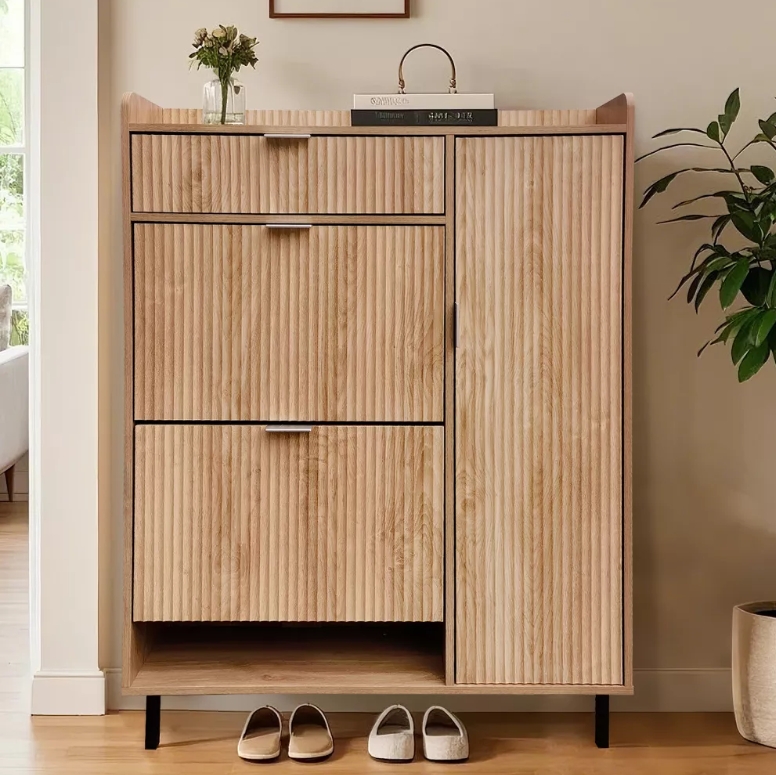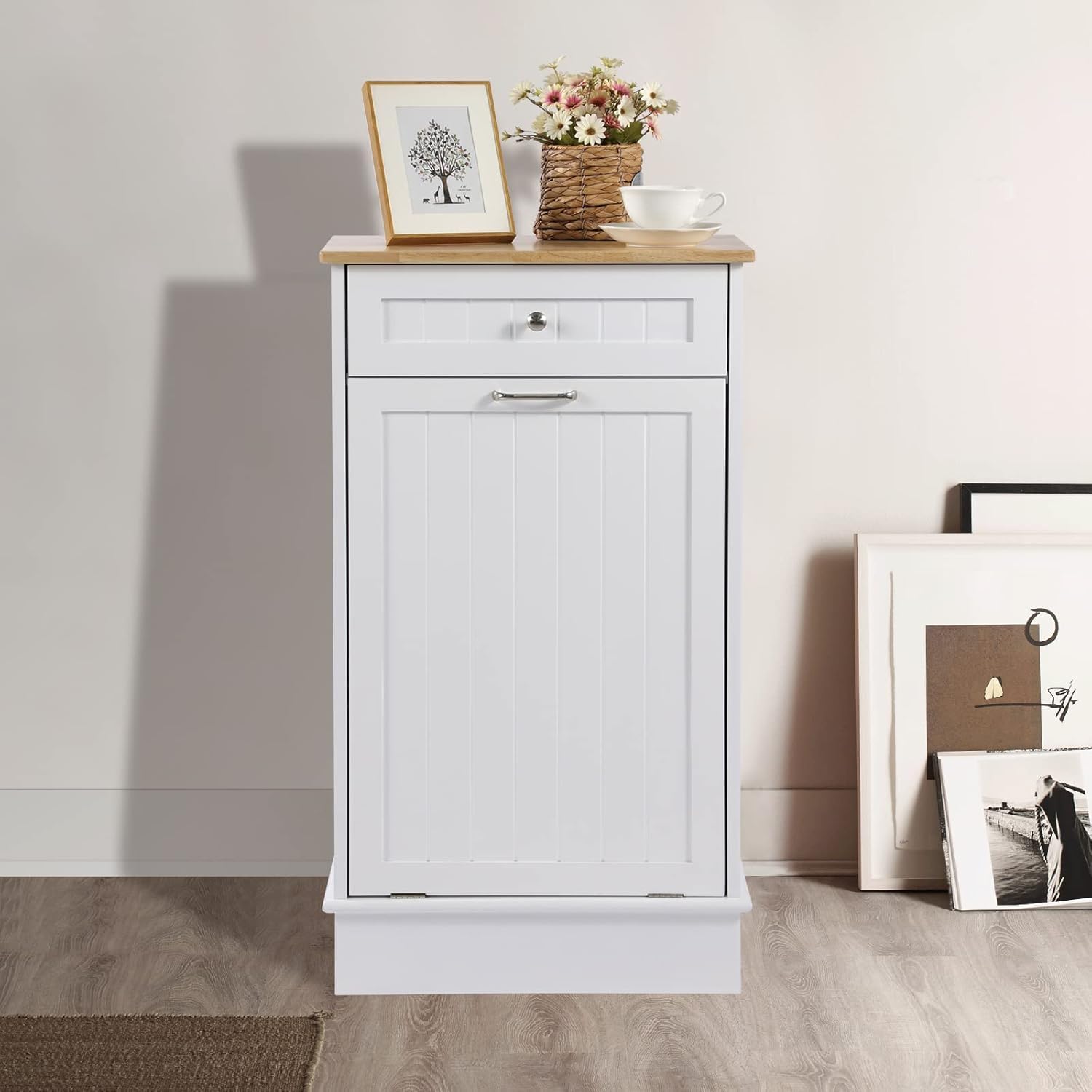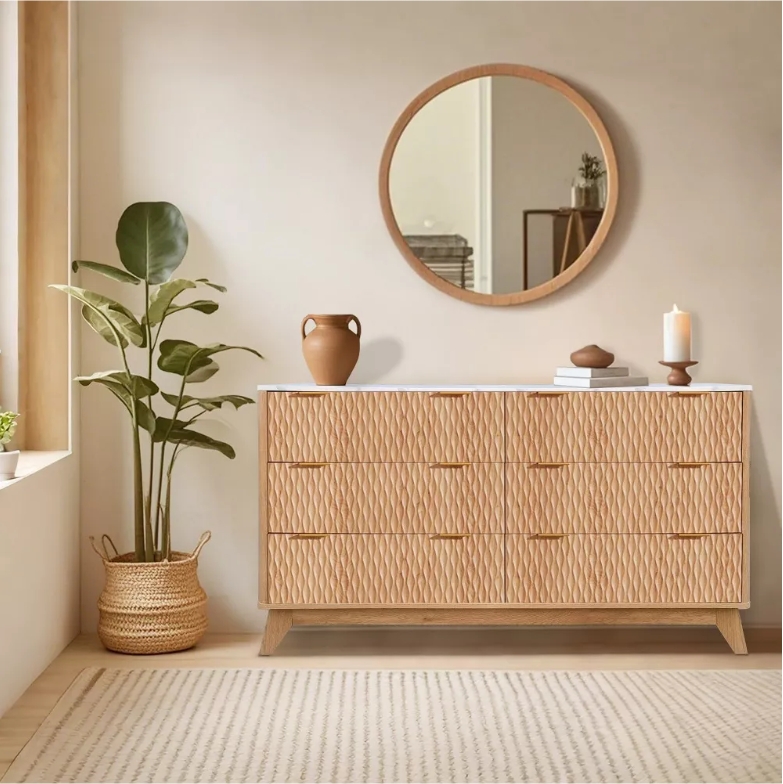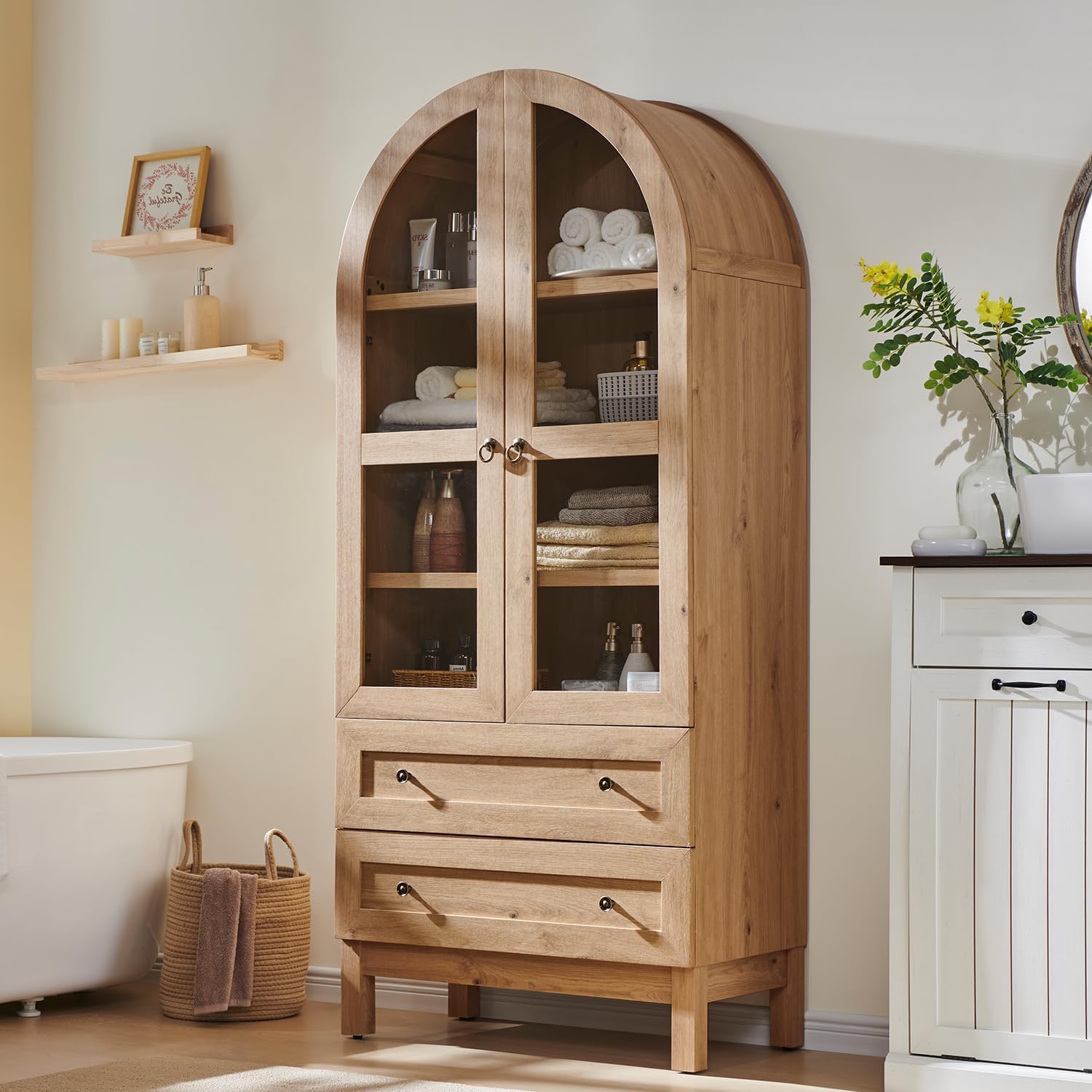In the world of KD furniture (Knock-Down or flat-pack furniture), the choice of materials directly affects not only the durability and cost but also the final look and user experience. As a professional furniture supplier, we at Delux Furniture focus on selecting the most suitable panels for our finished wood furniture products. This article introduces five commonly used panel types, outlining their structures, applications, and pros and cons.
1. MDF (Medium-Density Fiberboard)

Standard Size: 1220×2440mm, Thickness: 9mm–25mm
Structure: Made from compressed wood fiber and recycled paper materials
Grades: Commonly E1; some markets such as the USA require P2
Surface Options: Usually laminated with melamine, optionally PVC or PU lacquer
Edge Banding: PVC edge banding, painting, injection molding, or PU wrap
Pros & Cons: MDF is widely used in MDF furniture due to its smooth surface and affordable cost. However, it is relatively soft, cannot be molded into curves, and is sensitive to moisture.
2. Plywood (Multi-layer Board)

Standard Size: 1220×2440mm, Thickness: 11mm–25mm
Structure: Composed of cross-laminated wood veneers
Surface Options: Often paired with fireproof boards (HPL); melamine is used less
Edge Banding: Painted edges, PVC (may chip), or injection molding
Pros & Cons: Strong and versatile, suitable for curved structures like chair backs. However, higher formaldehyde emissions and potential for deformation in extreme climates are concerns.
3. Particle Board (Chipboard)

Standard Size: 1220×2440mm, Thickness: 11mm–25mm
Structure: Made from compressed wood chips and sawdust
Grades: E1 is standard; P2 required in certain regions
Surface Options: Double-sided melamine or PVC; occasionally fireproof veneer
Edge Banding: Painted, PVC, or molded edges
Pros & Cons: Commonly used in particle board furniture due to its cost-effectiveness. It is ideal for shelves and paneling but has lower strength and is vulnerable to water damage.
4. Moulded Chipboard
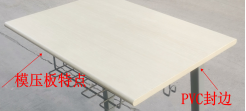
Standard Size: 1220×2440mm, Usually 18mm thick
Structure: Formed with fixed molds, with signature “duckbill” shaped edges
Surface Options: Usually double-faced with melamine or PVC
Pros & Cons: Used mainly for molded panels such as seat backs. While the edges appear more refined, the higher price and limited application range restrict its widespread use.
5. Hollow Board

Size: Custom-sized by square meter; Common thickness: 25mm or 30mm
Structure: Hollow inside with framing of plywood or finger-jointed wood
Surface Options: Double-sided melamine or PVC
Edge Banding: PVC edge banding or wrapping (prone to chipping)
Pros & Cons: Lightweight and ideal for large tabletop designs, offering a bold, solid look while reducing weight. However, it is costly and generally used in high-end wood furniture lines.
✅ Summary: Which Material Works Best for KD Furniture?
| Application Scenario | Recommended Panel | Why It Works |
|---|---|---|
| Regular panels and shelves | MDF / Particle Board | Stable surface, cost-effective for most KD furniture |
| Curved or high-strength areas | Plywood | Strong structure, can be shaped easily |
| Premium tabletops | Hollow Board | Impressive thickness with lighter weight |
| Molded seat panels | Moulded Chipboard | Clean edges, suitable for fixed-mold production |
At Delux Furniture, we’re committed to offering finished KD furniture products that are structurally sound, competitively priced, and aligned with the demands of global markets. As a reliable furniture supplier, we choose the best-suited materials to ensure long-term durability, aesthetic value, and compliance with standards such as E1 or P2.
If you’re interested in learning more about the materials we use in our finished furniture—such as edge banding techniques or laminated finishes—please feel free to contact us. We’d be happy to provide expert recommendations and help you select the right MDF furniture, particle board furniture, or other wood furniture that suits your brand and market.
📩 For inquiries about KD furniture , please contact us via our Contact Page or email: sales2@delux-furniture.com

